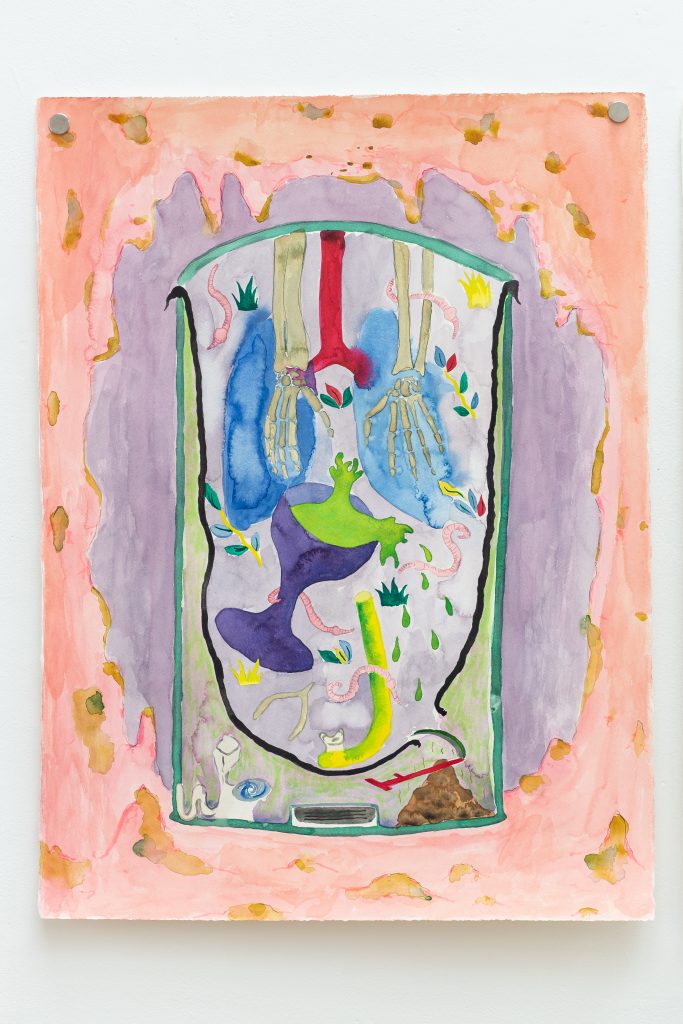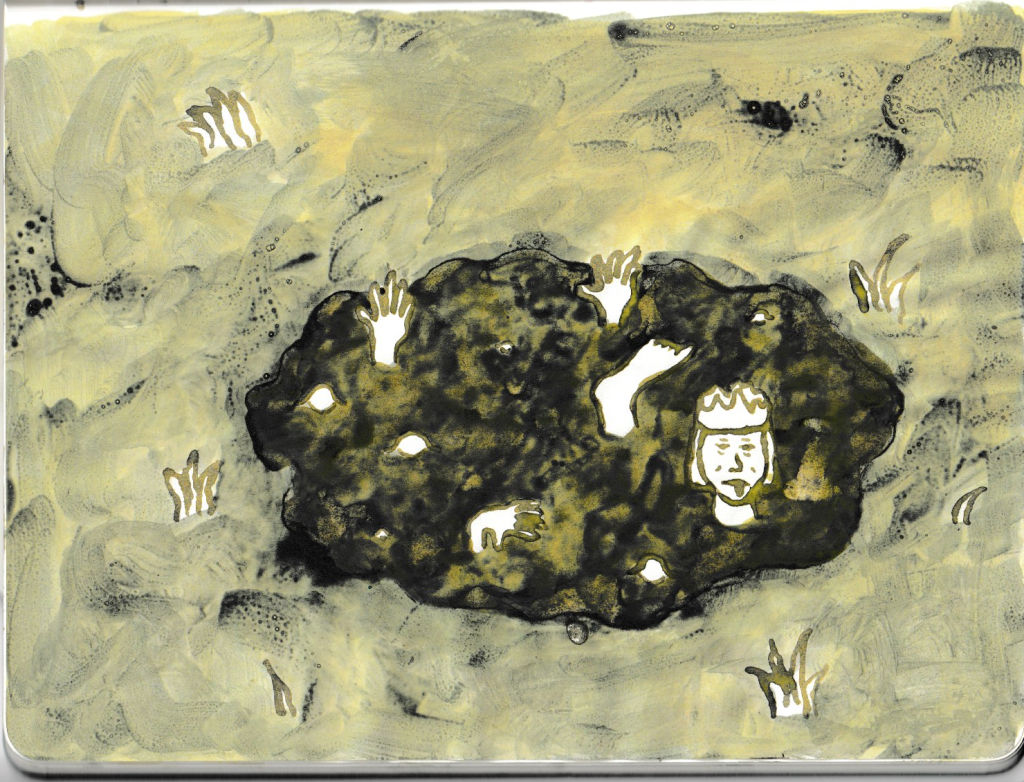
A little painting I did vibing with the 17th Century Tarot de Marseille Death card, taking it’s iconography of harvesting the dead to the site of the bog. I enjoyed making the inks as boggy as possible.
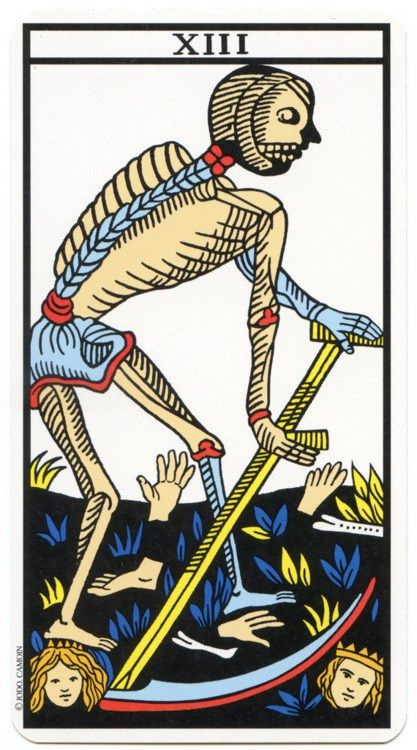

A little painting I did vibing with the 17th Century Tarot de Marseille Death card, taking it’s iconography of harvesting the dead to the site of the bog. I enjoyed making the inks as boggy as possible.

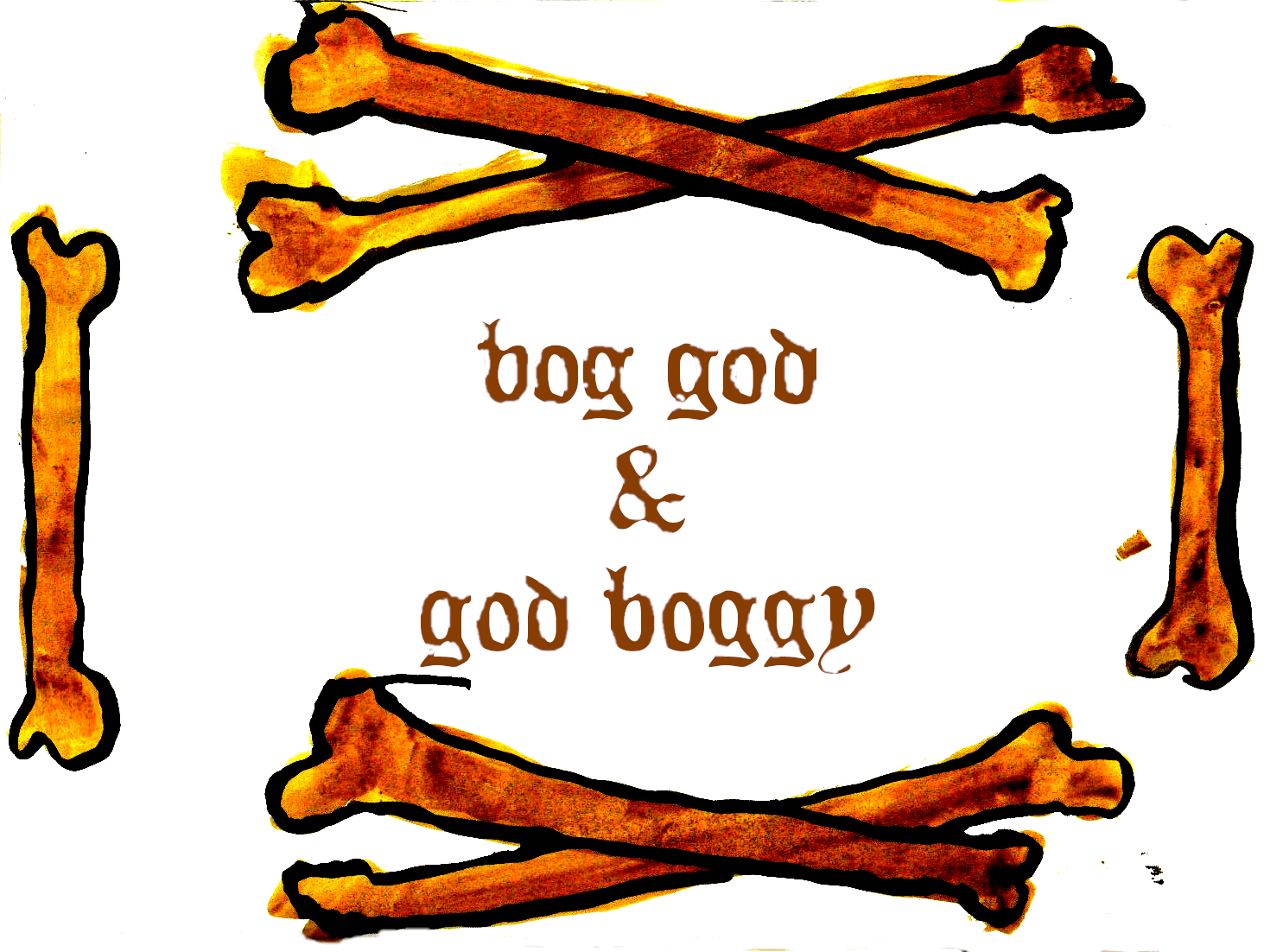
I was just in Cambridgeshire, spending a week at Wysing Arts Centre. This was a huge amount of fun, and I’ve got a lot to reflect on from my time there that I plan on writing about here. But, one of the things I was really intrigued by (and had a great chat around with Rosie Cooper, Wysing’s director) was the history of the fenlands in the East of England. Now, this is something I am by no means an expert on, but it struck me as interesting to be in a famously dry part of the country, but up until the 16/17th Century was predominantly an area of wetland known as The Fens. Some amazing things came from the fen drainage, in terms of making the area incredibly fertile ground for food production (the East of England produces around a third of Britain’s fresh vegetables). But also, a huge amount of things were lost, with the drying peat soil releasing millions of tons of CO2, and with sea levels rising this area is incredibly vulnerable to flooding. Also, there’s something here about ‘productivity’, about fen drainage as an immensely violent process of enforcing anthropocentrism on the land, and it’s peoples (something that was fiercely fought against by the Fen Tigers in an inspiring period of history of working class guerrilla warfare). This idea of inefficiency is one I feel a strong sense of (admittedly ambivalent) kinship with. I often feel lazy, which I know is my own internal able-ism, but this makes it no less hard to battle with. Still, I persist to be at peace with the pace of my own rhythms, no matter their own circuitous and non-linear patterns of productivity.
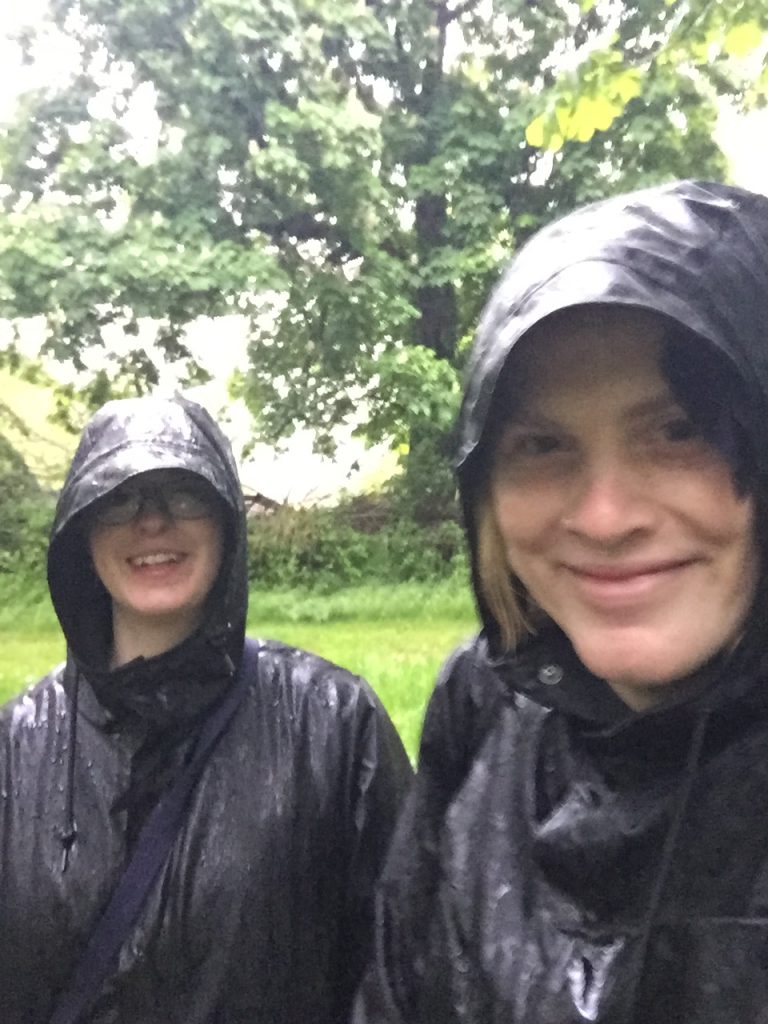
On the first day at Wysing we went for a walk through the woods to the local shop, where we got drenched in rain as lightning and thunder crashed about above our heads. Brief expulsive rain storms happened proceeded to happen pretty much every evening we were there too. It felt kinda like the wetlands were trying to claw their way back to the soil by tooth and nail. And with rising sea-levels, it seems certain the East of England’s rich arid grave of bogs past will return to wet.
So I’m now thinking back on my past obsession with depicting moments of spillage, which were always ways for me to talk about grief and the impossibility of controlling it. Grief as almost being definitionally a thing that exceeds all attempts to bracket it off, a thing that whether you like it or not will bleed out into every part of your life, colouring all.
